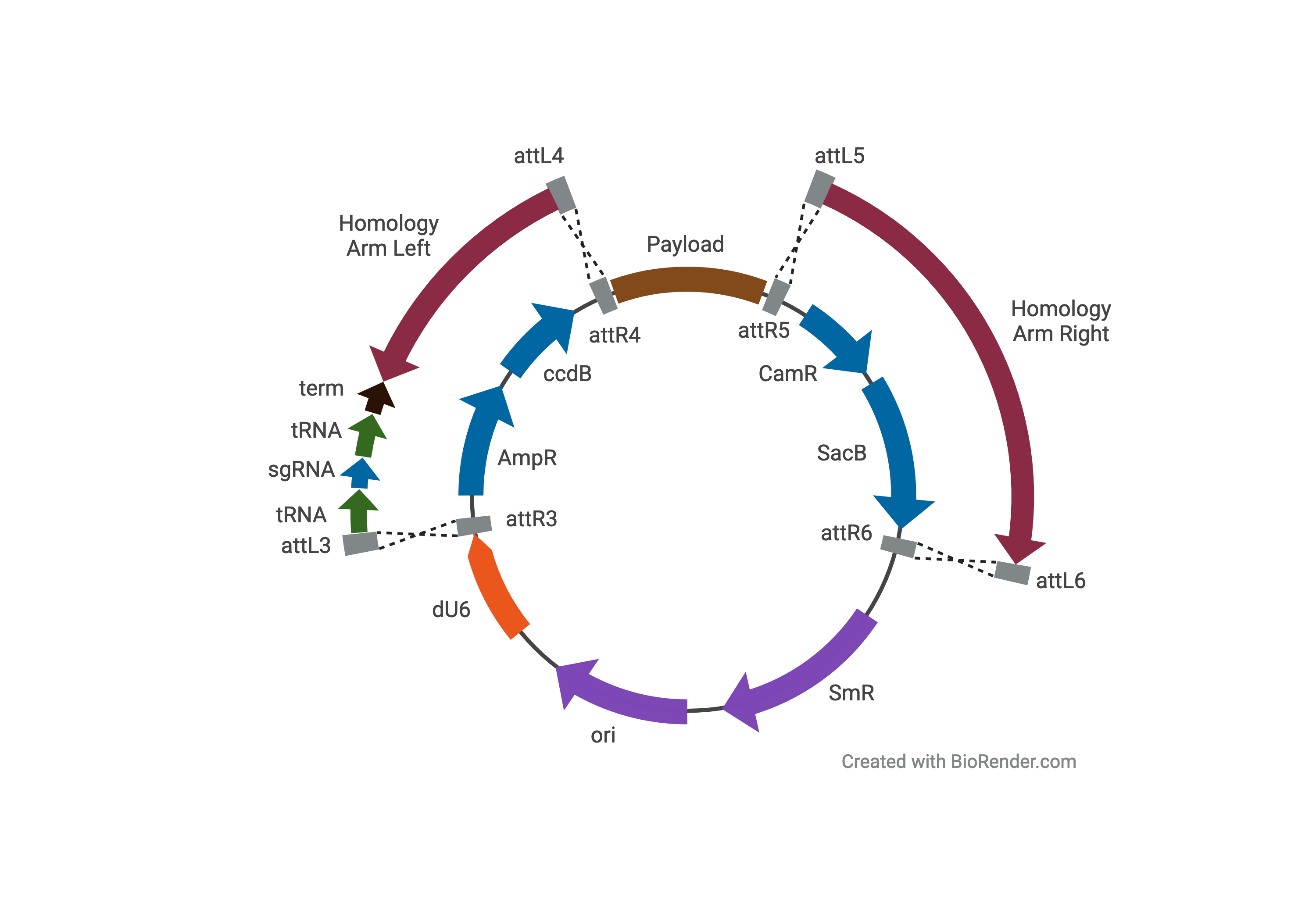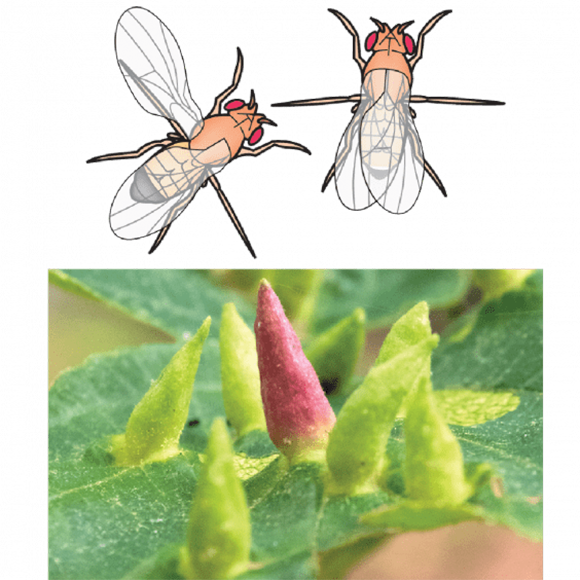Atalanta plasmid technology
New DNA plasmids for modification of genomes by homology-directed repair
The Atalanta technology is a significant genetic engineering advancement, simplifying cloning and improving the efficiency of CRISPR-Cas9 induced homology-directed repair (HDR) for genome modification of Drosophila and potentially other species. Current methods for cloning reagents used in CRISPR-Cas9 induced HDR involved multiple, inefficient cloning steps. The Janelia Atalanta (pJAT) series of plasmids simplifies these procedures by integrating recent advances in dsDNA synthesis and Gateway cloning for one-step, high-efficiency assembly of multiple reagents in a single cloning step. Resultant plasmids contain long homology arms, a sgRNA ubiquitously expressed at high levels from an promoter integral to the Atalanta plasmid, and potentially large payloads.
The resultant assembled Atalanta plasmids display higher HDR efficiency—approximately 25% of injected eggs—compared to previous methods. The high HDR efficiency of pJAT plasmids has enabled previously impossible experiments in Drosophila, such as one-step targeted chromosomal inversions.
The pJAT plasmids are designed to be versatile and user-friendly, catering to a wide range of experimental needs. The plasmids include several pre-configured options for common genetic manipulations, such as targeted insertional mutagenesis and chromosomal rearrangements. Additionally, "empty" pJAT plasmids with multiple cloning sites are available for researchers to construct customized plasmids with specific functionalities. This modular approach not only enhances the efficiency of HDR but also expands its applicability to various species, both model and non-model organisms.
Overall, the Atalanta platform holds great promise for the scientific community. Streamlining cloning and significantly boosting efficiency opens up new avenues for genetic research and experimentation. Researchers can now undertake more ambitious projects with greater ease, paving the way for groundbreaking discoveries in genetics and molecular biology.
Benefits and Applications of Atalanta Technology:
- Higher Efficiency: Achieves approximately 25% HDR efficiency, which is significantly higher than previous methods.
- Versatile and Modular: Provides pre-configured plasmids for common genetic manipulations and "empty" plasmids for customized applications.
- Simplified Process: Integrates guide RNA sequences and homology arms in a single cloning step, reducing complexity of cloning and time spent assembling plasmids.
- Broader Applicability: Suitable for HDR experiments in a wide range of model and non-model organisms, enabling more diverse genetic studies.
Opportunity:
Available for commercial licensing (internal research or commercial sale). Academic researchers may access the existing materials via Addgene.
Intellectual Property:
Pending patent application PCT/US2024/032902


